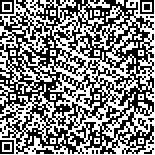| 摘要: |
| 为揭示富集传代培养过程中南极多环芳烃降解菌群的演替规律,以菲为唯一碳源和能源对南极菲尔德斯半岛不同地理位置的6份土壤样品进行了富集和连续传代培养,并采用高通量测序技术分析了富集传代培养过程中菲降解菌群的群落结构及生物多样性。Alpha多样性分析结果表明,在富集培养阶段南极菲降解菌的物种丰富度显著高于传代培养阶段(P<0.05),但传代培养阶段的代际物种丰富度无显著差异(P>0.05)。Beta多样性分析结果表明富集培养阶段与传代培养阶段的群落结构具有显著性差异(P<0.05),但传代培养阶段菲降解菌群趋于相对稳定,代际间群落结构无显著性差异(P>0.05)。大量微生物在富集培养阶段丰度较高,但因不能适应实验室培养条件或不能利用菲而在传代培养阶段被淘汰。反之,假单胞菌属(Pseudomonas)、鞘氨醇菌属(Sphingobium)、贪噬菌属(Variovorax)、甲基娇养杆菌属(Methylotenera)和产碱杆菌属(Alcaligenes)等适应了该选择压力并在传代培养阶段形成了动态平衡的优势种群。此外,Pseudomonas、Sphingobium和Variovorax等在富集传代培养过程中具有显著性差异的优势种在维持群落的动态平衡中也发挥着重要的作用。该研究有助于加深人们对南极土壤环境中持久性有机污染物的降解潜力以及关键微生物动态变化的认识,为下一步充分挖掘利用南极环保功能微生物资源提供重要的依据。 |
| 关键词: 南极 土壤 菲 富集 传代 微生物多样性 |
| DOI:10.11693/hyhz20210200032 |
| 分类号:Q93 |
| 基金项目:国家自然科学基金,42076165号;自然资源部业务化项目,JD0619008号;中央高校基本科研业务费国家重大项目培育项目,201822009号。 |
附件 |
|
| RESPONSES OF SOIL MICROORGANISMS TO PHENANTHRENE IN ENRICHMENT CULTURES AND SUBCULTURES FROM FILDES PENINSULA, ANTARCTICA |
|
LI Shu-Jun1,2,3,4, CUI Zhi-Song4, BAO Mu-Tai1,2,3, LUAN Xiao5, LI Ying-Chao4, ZHENG Li4
|
|
1.Frontiers Science Center for Deep Ocean Multispheres and Earth System;2.Key Laboratory of Marine Chemistry Theory and Technology, Ministry of Education;3.College of Chemistry and Chemical Engineering, Ocean University of China, Qingdao 266100, China;4.Marine Bioresources and Environment Research Center, First Institute of Oceanography, Ministry of Natural Resources of China, Qingdao 266061, China;5.State Key Laboratory of Environmental Aquatic Chemistry, Research Center for Eco-Environmental Sciences, Chinese Academy of Sciences, Beijing 100085, China
|
| Abstract: |
| To reveal the succession of the Antarctic polycyclic aromatic hydrocarbons (PAHs)-consuming bacterial communities, phenanthrene was utilized as the sole source of carbon and energy to enrich and subculture PAHs-degrading bacteria from soil samples at six different geographical stations in Fildes Peninsula, Antarctica. The bacterial community structures and biodiversity of the phenanthrene-degrading bacteria in enrichment culture and subcultures were analyzed by high-throughput amplified sequencing. Results of alpha diversity showed that the enrichment culture exhibited significantly higher species richness than those of the subcultures (P<0.05), and the species richness showed no significant difference among the subcultures (P>0.05). More importantly, results of beta diversity showed that the structure of phenanthrene-degrading bacterial consortia exhibited significant difference between the enrichment culture and the subcultures (P<0.05). A large number of microorganisms had high abundance in the enrichment culture stage, but they were eliminated in the subculture stage because they could not adapt to the laboratory culture conditions or could not use phenanthrene. In contrast, the structure of phenanthrene-degrading bacterial consortia exhibited no significant difference among different subcultures (P>0.05). The genera Pseudomonas, Sphingobium, Variovorax, Methylotenera, and Alcaligenes were the main phenanthrene-degraders, and they were stabilized dynamically in subcultures. In addition, Pseudomonas, Sphingobium, and Variovorax played a major role in maintaining dynamic balance in phenanthrene-degrading bacterial consortia. This study improved the understanding of degradation potential of persistent organic pollutants and the dynamics of the key species in Antarctic soil, and provided new insights into the exploitation and utilization of Antarctic microbial resources, especially for environmental protection. |
| Key words: Antarctica soil phenanthrene enrichment subculture microbial diversity |
